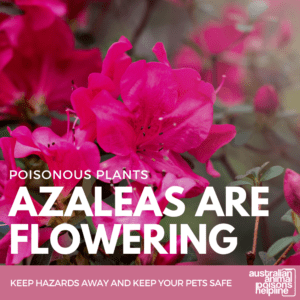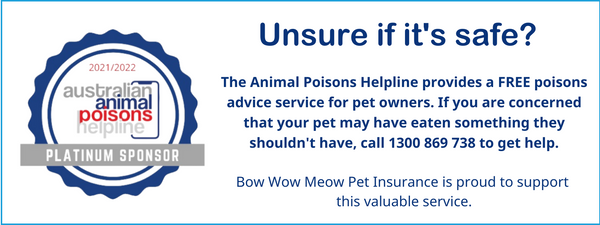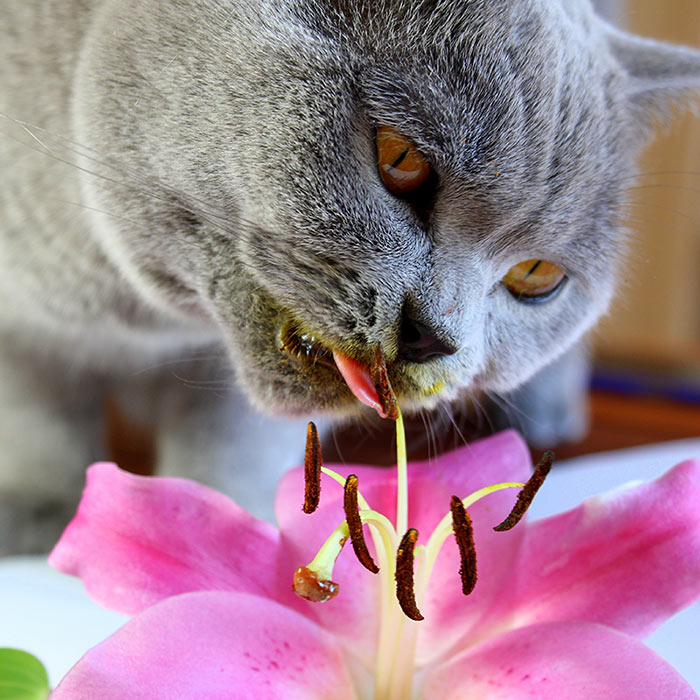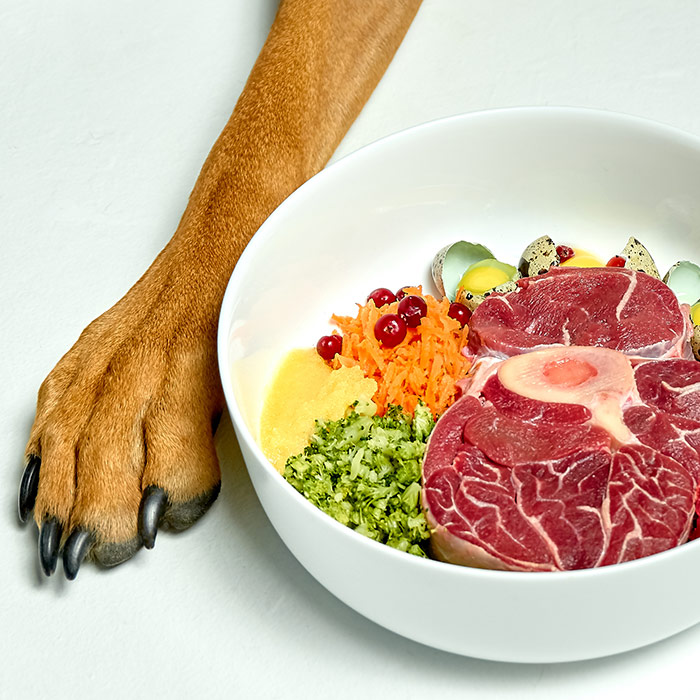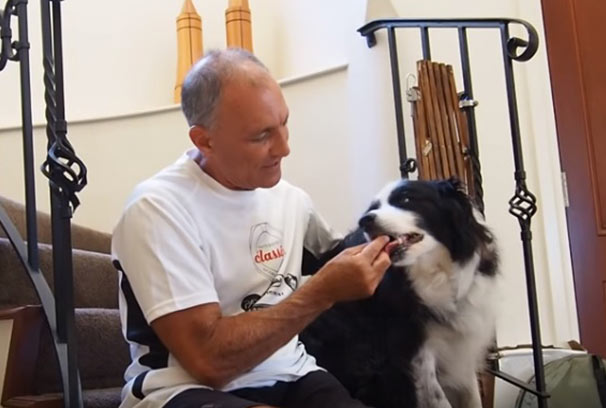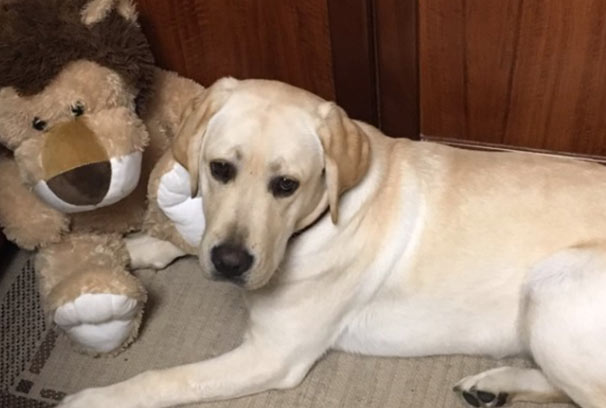Toxic plants for dogs: Protect your canine companions
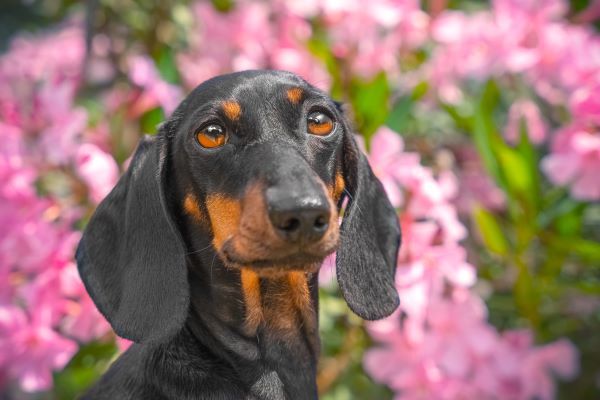
Most pet parents are happy to take their fur babies for walks at the local park and to let them play in the backyard. However, these activities may harbour a hidden danger, with many of our gardens and parks containing toxic plants for dogs.
In 2021, approximately 10% of calls made to the Animal Poisons Helpline were regarding plant exposures – meaning that they receive calls every day regarding pets ingesting poisonous plants.
Importance of awareness
Knowlege of the more common plants found in gardens, parks and suburbs of Australia that are toxic for dogs is key when it comes to keeping our pooches safe and healthy. In this article, we will take a look at the following topics:
- Cost of toxic plant treatment for dogs
- Which dogs are most likely to be affected by toxic plant poisoning?
- Understanding plant toxicity levels
Some common plants toxic for dogs:
- Brunfelsia
- Sago palm
- Oleander
- Yucca plant
- Queen palm
- Castor bean plant
- Kalanchoe
- Azalea
- Foxglove
- Spring bulbs
Critical information that could help save your dog’s life:
Which dogs are most likely to be affected by toxic plant poisoning?
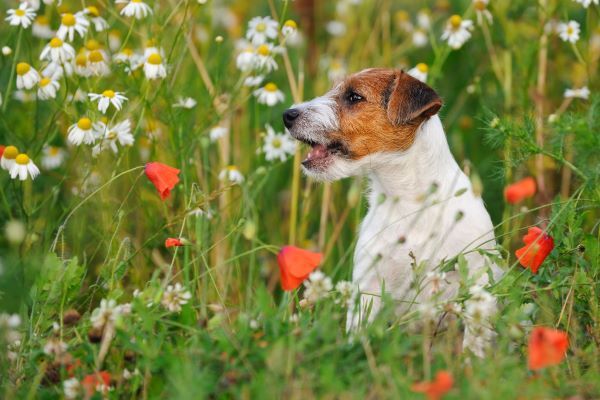
Dogs of any age and breed can be affected by plant toxicity and there is no specific breed that is more susceptible. According to PetSure data from 2020, dogs under three years of age had more incidences of plant toxicity, probably because young pets tend to be more inquisitive and more likely to mouth or chew on things they shouldn’t.
Boredom and changes in the surroundings are other factors that may affect the incidence of poisoning. Pets – especially single household pets – of all ages may become bored or restless if left alone or confined for too long at any one time, and chewing on objects for relief from boredom is common. Pets of all ages also explore changes in their environment, for example, pets commonly chew the leaves or ripe berries of potentially poisonous plants placed in the home during holidays).
According to PetSure data in 2020, intoxication due to ingestion of plants was most prevalent in the following dog breeds:
| Breed | Prevalence* |
| Dachshund | 0.34% |
| Bull Terrier | 0.32% |
| English Springer Spaniel | 0.26% |
| Dobermann | 0.25% |
| Labrador Retriever | 0.23% |
| French Bulldog | 0.22% |
| Burmese Mountain Dog | 0.21% |
| Shiba Inu | 0.20% |
| Tenterfield Terrier | 0.20% |
| Silky Terrier | 0.19% |
*Prevalence = Total number of unique claiming pets / total number of insured pets across 12-month period. Excludes breeds with less than 500 active pet insurance policies.
How much does it cost to treat your dog if they ingest a toxic plant?*
Average claim cost for a single treatment |
Highest claim cost for a single treatment |
| $648 | $19,758 |
* According to PetSure claims data from 2020
As the table above illustrates, treatment costs for toxic plant ingestion vary greatly, depending on the type of toxin present in the plant, the severity of the poisoning and the type of treatment required.
Because it is difficult to predict the costs of veterinary care, it can help to have measures in place to help prepare for the unexpected. Bow Wow Meow Pet Insurance can help protect you and your dog by covering a portion of the eligible vet bill should an unexpected trip to the vet occur.
Get a quote for 2 months free pet insurance for your puppy or kitten in their first year.
Understanding plant toxicity levels
Believe it or not, most plants can be toxic if a large quantity is ingested, even those considered pet-safe. Whilst most small ingestions of plants tend to be fairly benign, there are a number of highly toxic plants of dogs, as well as many plants which can result in varying degrees of toxicity. It is therefore important to check the safety of any plant before placing them around pets (or placing pets around them!).
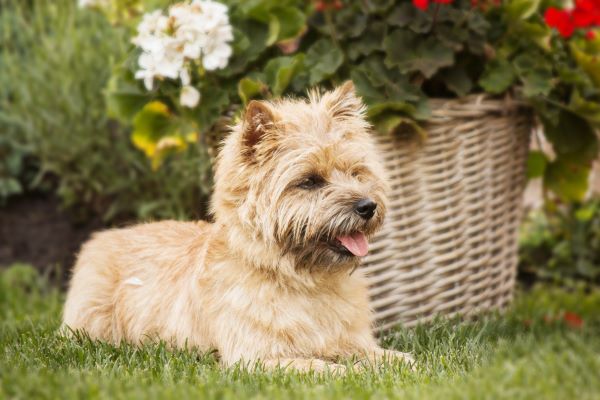
While there are a large number of plants which can potentially be harmful to pets, most exposures tend to result in only mild to moderate effects. Many exposures can be managed at home, with only around 1 in 10 plant exposures requiring immediate veterinary assessment.
However, there are some plants which can be very dangerous to pets, even after small ingestions, so it’s wise to not take any chances. The best policy is to deny access to all potentially toxic plants for dogs.
The section below describes some common plants with which pet owners should be particularly cautious, as per expert advice from the Animal Poisons Helpline. Please note that if a plant is not listed here it does not mean that it is not toxic to dogs.
Some common plants toxic for dogs
Brunfelsia
Description
Brunfelsia, also known as yesterday-today-and-tomorrow, is an ornamental shrub with pretty flowers that range in colour from deep purple to white. Fruiting occurs from late summer into early winter.
Toxicity
It is a highly poisonous plant that contains an as yet unidentified toxin. All parts of the plant are toxic, especially the berries and flowers, and any ingestion should be considered life-threatening.
Symptoms
Early signs of poisoning in dogs include drooling, vomiting, diarrhoea (which may contain berries and other plant material) and episodes of coughing or sneezing. These may be followed by agitation, difficulty walking, muscle tremors, and convulsions. Changes to the blood pressure and heart rate may also occur. Symptoms are generally seen within a couple of hours of ingestion, however in some cases they may appear much later.
Advice from the Animal Poisons Helpline
Dogs seem to be attracted to brunfelsia and have been known to jump up to ingest the ripe fruit, sometimes eating large amounts. The best advice is to keep dogs well away from these plants. When pruning them, be mindful that pets do not get access to the cuttings.
Sago palm
Description
Sago Palm (Cycas revoluta) are tree-like plants with trunks surmounted by rosettes of leathery leaves, with numerous leaflets. They grow in open forests and woodlands of northern Australia, mostly coastal to subcoastal, and some are cultivated in gardens.
Toxicity
Sago palms and other cycads are extremely toxic for dogs and ingestion of any part can result in poisoning. The seeds and young leaves are the most toxic parts – ingestion of as little as one seed from a Sago Palm can be life-threatening. As yet, no effective treatment is known. In some published case series, the survival rate in dogs poisoned by Sago Palm is reported to be as low as 50%.
Symptoms
Signs of poisoning include abdominal pain, vomiting and diarrhoea, and drowsiness. Neurological signs include weakness, incoordination, tremors, seizures, and coma. Liver failure – jaundice, yellow appearance, inappetence, depressed mood – can also occur.
Advice from the Animal Poisons Helpline
Dog owners need to take extreme care around Sago palm or any other cycads. Many dog owners that have cycads growing in their garden are not aware of the significant risk until it is too late. If you have any of them growing in your garden, please consider removing them or at least restricting access for your dog.
Oleander
Description
Oleander is a common poisonous shrub that grows throughout Australia. It is often used for landscaping because it tolerates dry conditions well and has attractive flowers in a range of colours.
Toxicity
All parts of the oleander contain a toxin that affects the electrical activity of the heart, and ingestion of even small quantities can be life-threatening. Although oleander is not particularly palatable, the Animal Poisons Helpline has received calls about dogs being severely poisoned after ingesting its leaves, flowers or seeds.
Symptoms
Early signs of oleander poisoning may include drooling, refusal to eat or drink, vomiting and diarrhoea. As the poisoning progresses, animals may become weak, lethargic, and unsteady on their feet. They may have tremors and dilated pupils and changes to the heart rate and rhythm.
Yucca plant
Description
These perennial shrubs have sword shaped leaves and white flowers that are typically held on strong stems above the foliage. Because they are a hardy and low-maintenance species, they can often be found growing in gardens throughout Australia.
Symptoms
Gastrointestinal signs such as vomiting, diarrhoea, drooling and reduced appetite may occur. Additional symptoms may include depression, drowsiness, weakness, low heartrate and dilated pupils.
Other info
Some species of yucca have sharp leaf margins and/or terminal spines which can potentially result in injury to the mouth and gastrointestinal tract when chewed on or ingested.
Queen palm
Description
The queen palm or cocos palm is an introduced palm that commonly grows in Queensland and New South Wales. The queen palm can grow up to 15 metres high and produces clusters of yellow or orange fruit which are approximately 3 to 3.5 cm in diameter and drop to the ground once ripe.
Symptoms
Dogs that ingest the fruit develop transient vomiting, diarrhoea, reduced appetite and lethargy. There are anecdotal reports of more serious effects in dogs, but these effects do not seem to be a common occurrence.
Advice from the Animal Poisons Helpline
If you have a queen palm growing in your garden, ensure the fruit is regularly picked up or remove the fruiting clusters from the tree before they have a chance to drop. When taking your dog to parks or other properties with queen palms, make sure they do not have access to any fruit that has dropped to the ground.
Dogs seem to be attracted to queen palm fruit that has fallen to the ground and will sometimes ingest a large amount if given the opportunity. While the fruit has a thin outer flesh, the harder fibrous interior means that they can become stuck in the stomach or bowel, causing an obstruction.
Castor bean plant
Description
Ricinus communis, also known as the caster bean or caster oil plant, is a highly poisonous plant that grows throughout Australia. Often found in vacant plots and unkept gardens, this fast-growing plant produces spiny seed capsules that each hold several seeds. When ripe, the seed capsules rupture and launch the seeds up to a few metres from the plant.
Toxicity
Within the seeds is a highly poisonous compound called ricin. When ingested, ricin enters the body’s cells and inhibits protein synthesis, resulting in cell death. Small ingestions can result in serious poisoning and while there is no antidote, early veterinary treatment can be lifesaving. Whilst cases are rare, dogs can be seriously poisoned or even die from eating this plant.
Symptoms
Signs of poisoning can include abdominal tenderness and pain, drooling, vomiting and diarrhoea (which may contain blood), loss of appetite, weakness and multiple organ injury or failure.
Advice from the Animal Poisons Helpline
If you are a pet owner and see this plant growing on your property, it is best removed. Do not allow your pets access to (or in the immediate vicinity of) any established castor oil plants.
Kalanchoe
Description
Plants in the Kalanchoe genus, more commonly known as widow’s-thrill, cathedral bells, air plant, mother-of-thousands, and mother-of-millions, are common houseplants that are grown for their succulent foliage and showy, bright red, orange or pink flowers that appear in winter. The genus contains over 100 species, all of which should be considered potentially poisonous.
Toxicity
Kalanchoe contain toxins that affect the heart, similar to toxins found in oleander and foxglove. Poisoning has been recorded in dogs (who are known to be very susceptible), rabbits, chickens, livestock and even reptiles. The toxins are particularly concentrated in the flowers.
Symptoms
Signs of poisoning include drooling, vomiting, diarrhoea (which can be severe and persistent), weakness, laboured breathing, teeth grinding paralysis and heart failure. Depending on the amount ingested, gastrointestinal upset may occur without a progression to more serious effects.
Advice from the Animal Poisons Helpline
If you have these plants in your house or garden, please ensure your pets cannot access them particularly during winter flowering.
Azalea
Description
Azaleas are evergreen shrubs with funnel-shaped flowers in various colours that appear spectacular in full bloom.
Toxicity
Azaleas and other Rhododendrons are particularly toxic to most animals, including dogs and cats. They contain variable amounts of grayanotoxins throughout all parts of the plant, including the stem, leaves, flower and even the nectar.
Symptoms
Even small ingestions can cause gastrointestinal upset such as drooling, refusal to eat, vomiting, diarrhoea and abdominal pain. Large ingestions can affect the central nervous system resulting in unsteadiness on the feet, drowsiness, weakness, tremors, blindness, coma and death. In severe poisonings, the cardiovascular system may also be affected. Recovery from poisoning can take days.
Advice from the Animal Poisons Helpline
Whilst there is no specific antidote, early veterinary treatment can be lifesaving.
Foxglove
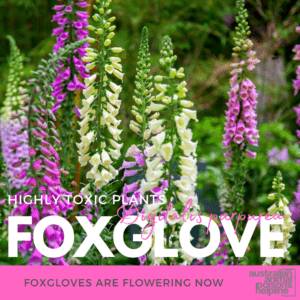 Description
Description
Foxglove, or digitalis, is sometimes grown in temperate cottage gardens of Australia and New Zealand for its attractive and colourful bell-shaped flowers in purple, pink, red, white, or yellow tubular flowers (with spots).
Toxicity
All parts of this plant contain toxic compounds known as cardiac glycosides. When ingested, these toxins can alter the electrical activity in the heart, which can be life-threatening, and severe effects can occur after the ingestion of a relatively small amount of plant material.
Symptoms
Early signs of poisoning can include acute abdominal pain, drooling, refusal to eat or drink, frequent urination, vomiting and diarrhoea. As the poisoning progresses, animals may become weak, lethargic, and unsteady on their feet, and/or irregular slow pulse, tremors, convulsions, and rarely death.
Whilst the plant is bitter and generally considered unpalatable, if you have foxglove growing in your garden please ensure your pets cannot access it.
Spring bulbs
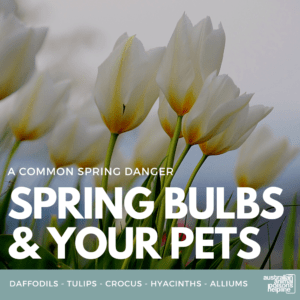 Description
Description
Almost all plants that arise from bulbs or corms, including daffodils, jonquils, tulips, hyacinths, iris, bluebells, crocus, amaryllis, gladiola, alliums, and lilies, have the potential to be poisonous if ingested by your pet.
Toxicity and symptoms
All parts of these plants, but especially the bulbs, contain toxic substances which irritate the gastrointestinal tract causing drooling, vomiting, diarrhoea and abdominal cramps. These signs can lead to secondary complications such as lethargy and dehydration.
If your pet chews on or eats a bulb, signs could be much more severe including an irregular heartbeat, low blood pressure and seizures.
Advice from the Animal Poisons Helpline
Dogs in particular might play with a bulb and bite into it mistaking it for a toy. Dogs might also dig bulbs up in the garden, especially if fertilisers have recently been added to the soil. If your dog is a digger, cordon off bulbs or plant them in an area your pet can not access.
If digging up bulbs or storing them, keep your pet away until they have been replanted or stored securely.
Do not allow pets to drink water from vases that have contained these plants.
Pet insurance can provide peace of mind and protection in the event that your pet is ever poisoned.
Find out more about our dog insurance options
First aid for plant toxicity
Depending on the toxin involved and the amount consumed, signs and severity of plant toxicity can vary greatly. Mild signs may be associated with oral irritation such as drooling or rubbing at the mouth, or there maybe gastrointestinal upsets including vomiting and diarrhoea. More serious signs can include abdominal pain and lethargy ranging through to very serious signs which may include symptoms associated with organ damage, or neurological signs like seizures.
Death can occur with some toxins, so it is important to get help as soon as possible. Speak to your vet if you think your pet has eaten a plant they shouldn’t have. Alternatively, call the Animal Poisons Helpline for advice on 1300 869 738.
Immediate actions
 Preventing plant toxicity is more effective than treatment! However, in the unfortunate event that your pet has ingested some plant materials and you are unsure if it is toxic, it is best to treat it as a toxic plant.
Preventing plant toxicity is more effective than treatment! However, in the unfortunate event that your pet has ingested some plant materials and you are unsure if it is toxic, it is best to treat it as a toxic plant.
Remove any plant material from your pet’s mouth, and have your pet checked by your vet. Before you visit your vet, remember to take samples of the plant and/or photos of the leaves, flowering parts and any fruits on the plant. These will help your vet to identify if the plant is toxic for dogs and will aid in providing the best treatment protocol.
Veterinary treatment
Treatment of plant toxicity will depend on the type of toxin present in the plant, and may include:
- Removing any plant material left in your pet’s mouth
- Rinsing with water or milk
- Removing any plant material left in the stomach by inducing vomiting
- Giving activated charcoal to absorb toxin in the intestinal tract.
- Medications may be needed where the pet’s heart and lungs function has been affected
- Hospitalisaton for continued monitoring of vital functions
- Some pets may need intravenous fluids to support internal organs that have been damaged.
How can you create a safe environment for your dog?
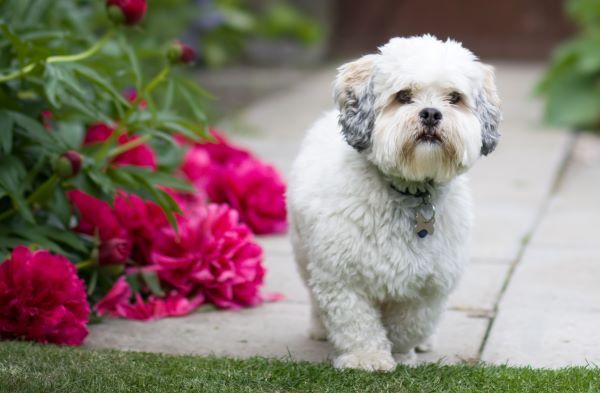
Dog-proofing your home and yard
To competely dog-proof your garden or outdoor area, you should identify and remove any toxic plants and aim to only grow pet-safe plants. You should also be aware that pesticides, such as rodenticide, snail bait. other pesticides and fertilisers are poisons that can be harmful to pets if ingested.
If your dog shows interest in your indoor house plants, ensure these are kept out of reach wherever possible. Be aware that even pet-friendly plants can potentially result in gastrointestinal upset and possibly allergic reactions if they are ingested. If you have a particularly mischievous pooch, it is prudent to keep indoor plants out of reach by placing them in out-of-reach places like on cabinets or high shelves, or using hanging baskets that are suspended from the ceiling.
Safe plant alternatives for landscaping
Here are 10 common non-toxic outdoor plants that are pet-friendly:
- Camellia
- Fuchsia
- Sunflower
- Rose
- Petunia
- Coral bells
- Crepe myrtle
- Rosemary
- Hibiscus
- Silver heart
Pet-friendly plant list for indoors
Here are 10 indoor plants that are considered safe for our pets:
- Baby tears
- Boston fern
- Calatheas
- Christmas cactus
- Golden cane palm
- Moon orchid
- Mosaic plant
- Pilea spp.
- Polka dot plant
- Spider plant
In a nutshell
Many plants are poisonous to dogs, and consumption of these plants can cause a wide range of symptoms, depending on the type of toxin involved.
If you know or even suspect that your dog has ingested part of a toxic plant, please seek medical advice immediately. Where possible, take a piece of the plant with you to the vet.
Unsure how serious it is?
Bow Wow Meow policyholders can get access to trusted vet care anytime, anywhere, at no additional cost. Connect to an experienced Australian registered vet via video call, 24/7. Whether it’s providing vet advice, setting up at-home treatment plans, or confirming if you need to visit a vet in person, you can get help when you need it.
Find out more about our pet insurance cover options.
Bow Wow Meow Pet Insurance can help protect you and your dog should an unexpected trip to the vet occur.
-
Find out more about our dog insurance options
-
Get an online pet insurance quote










